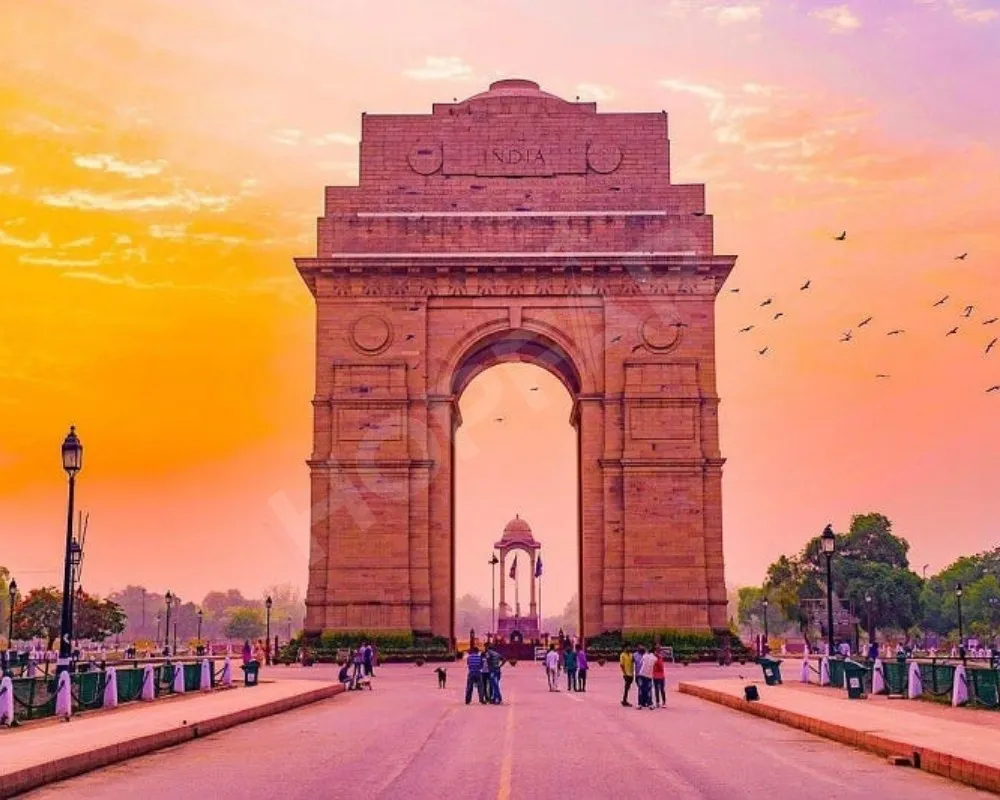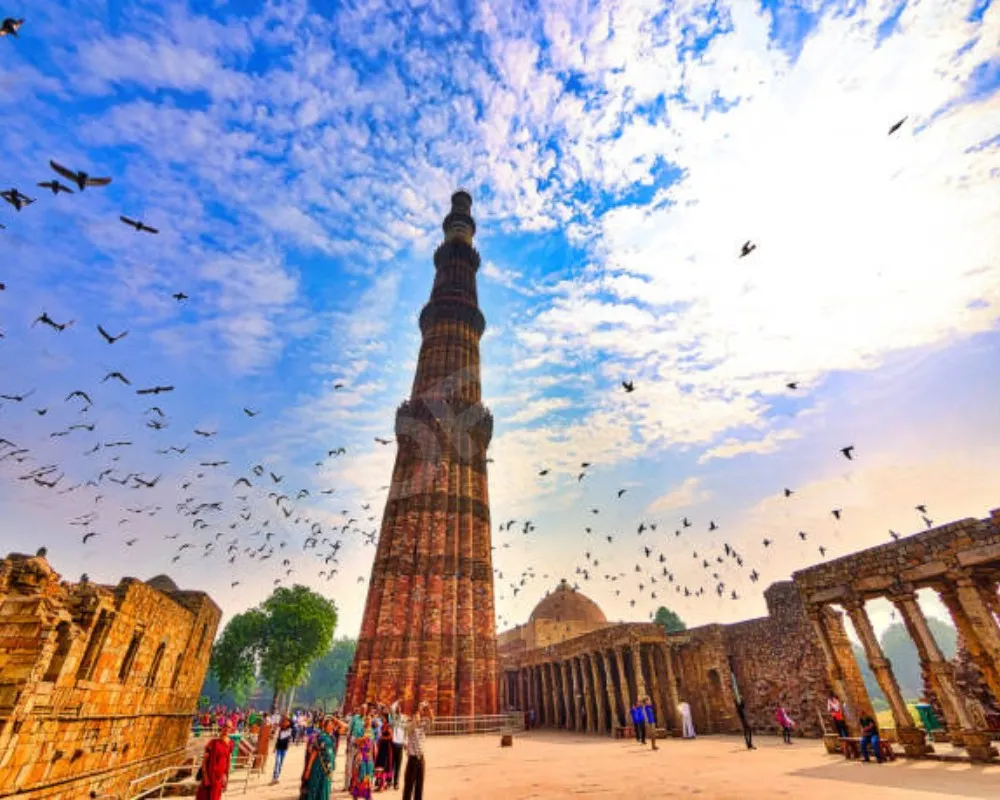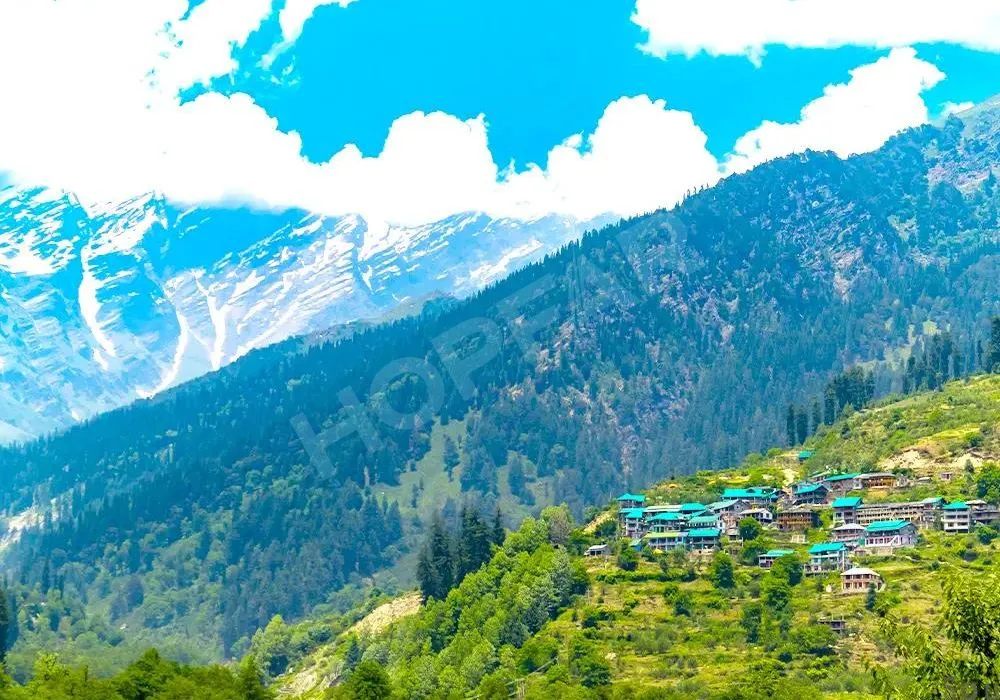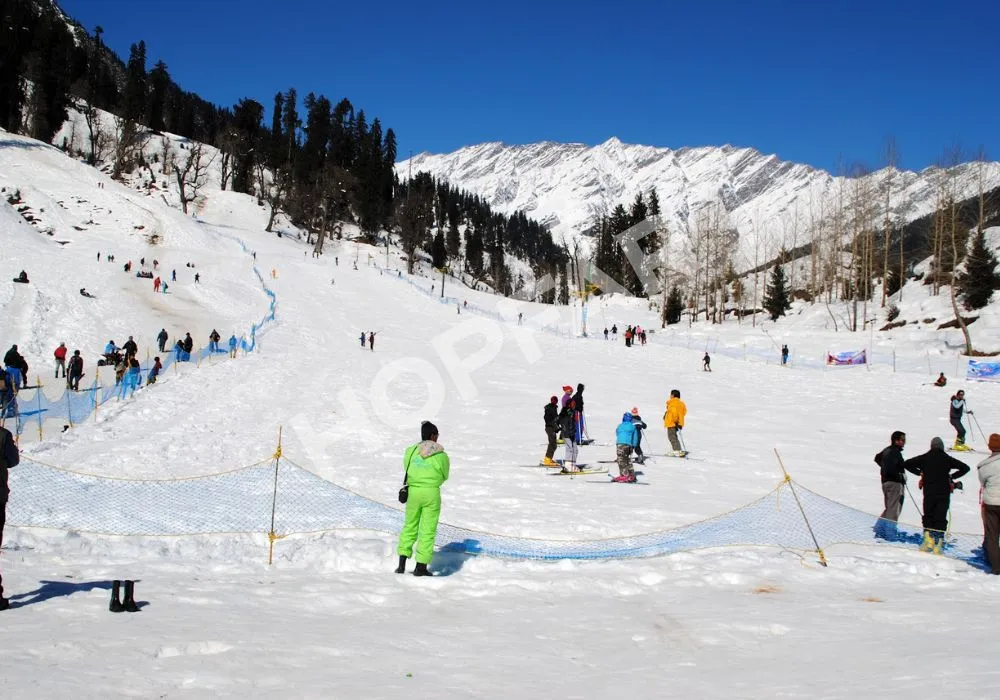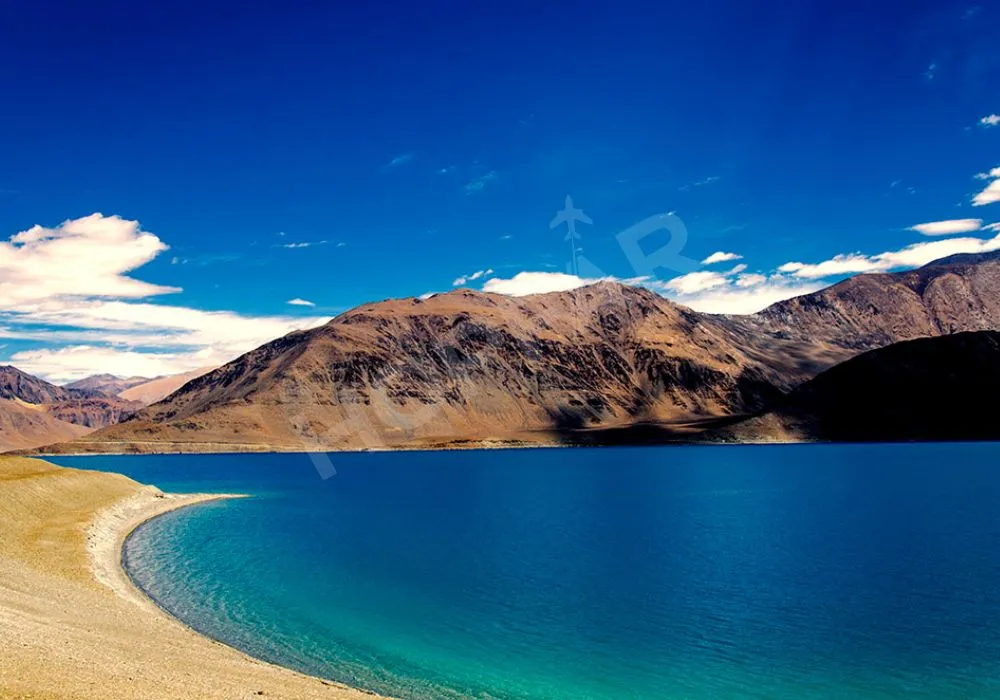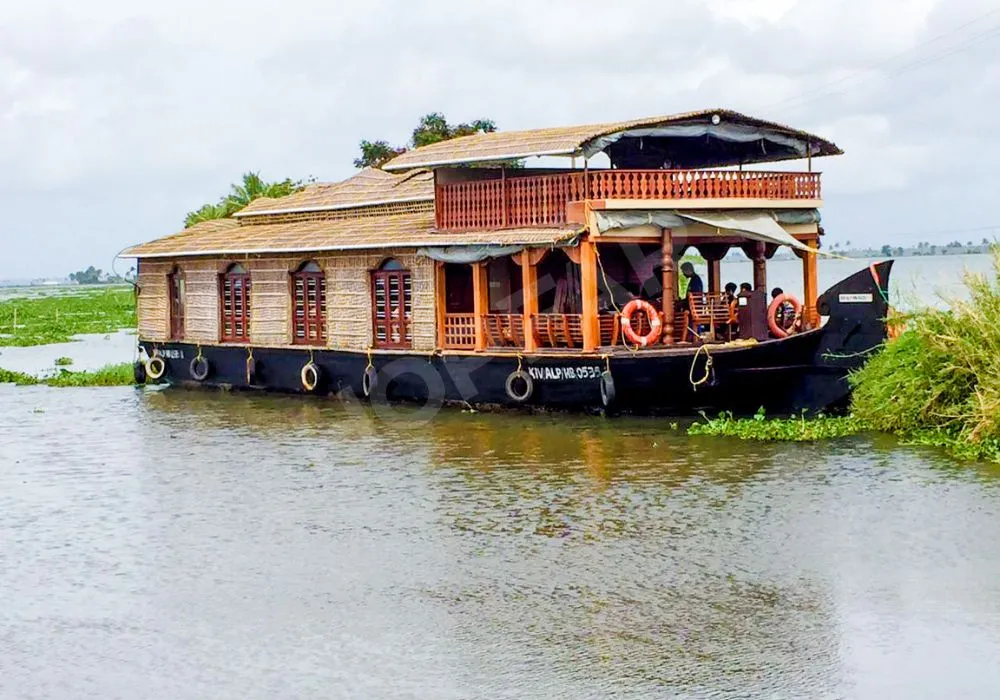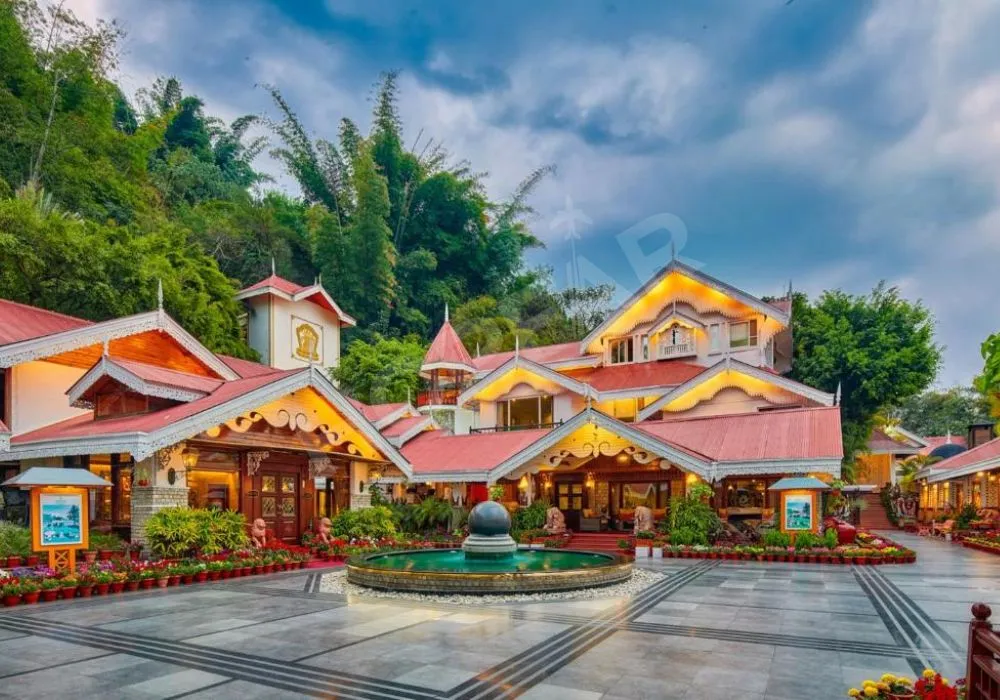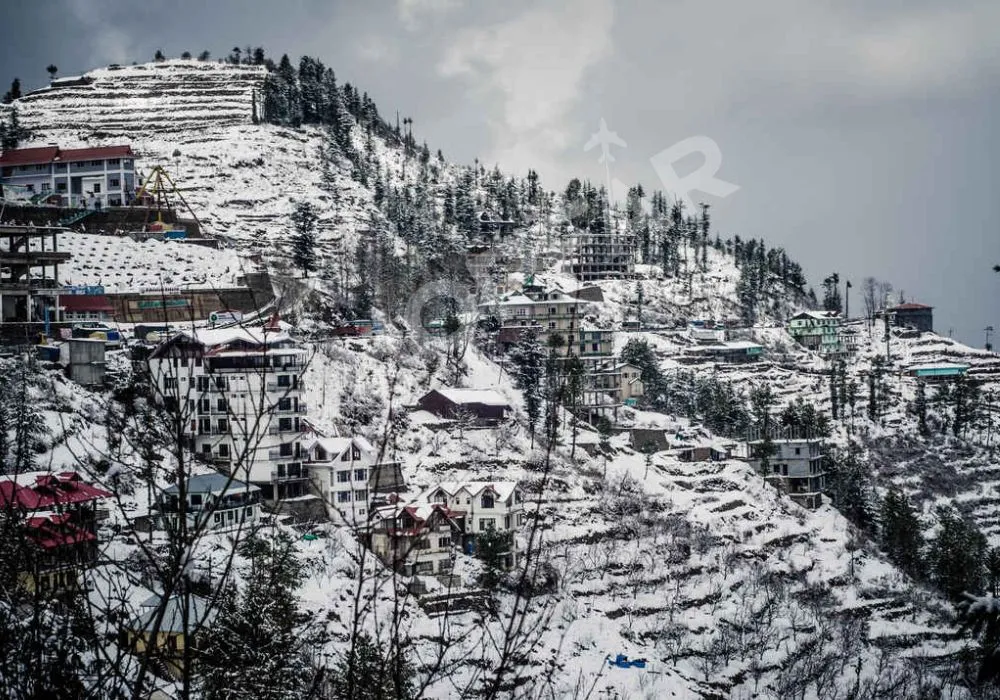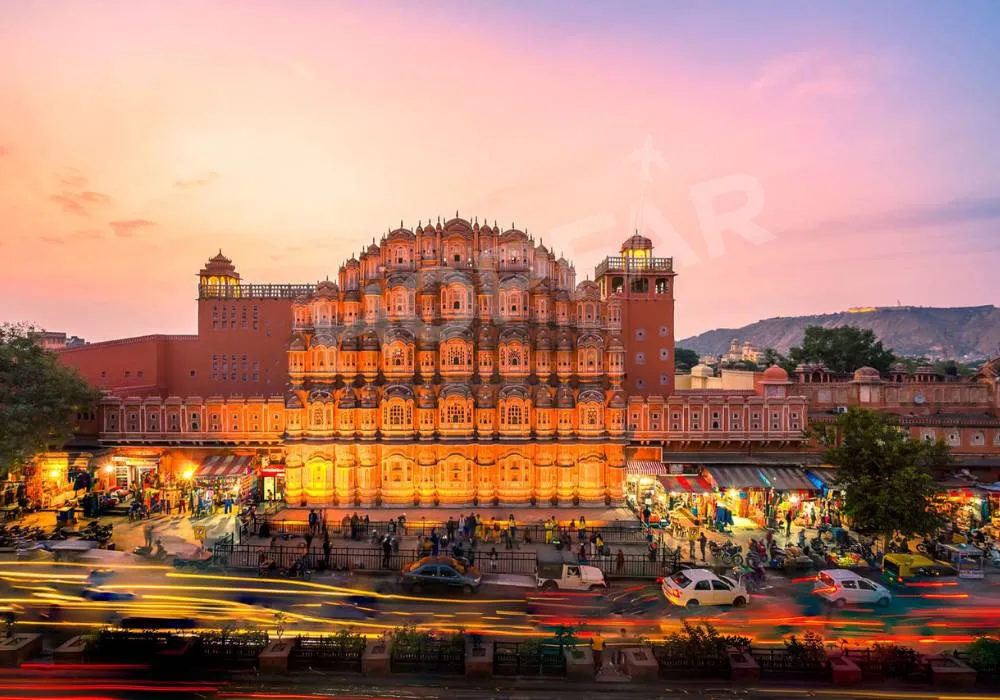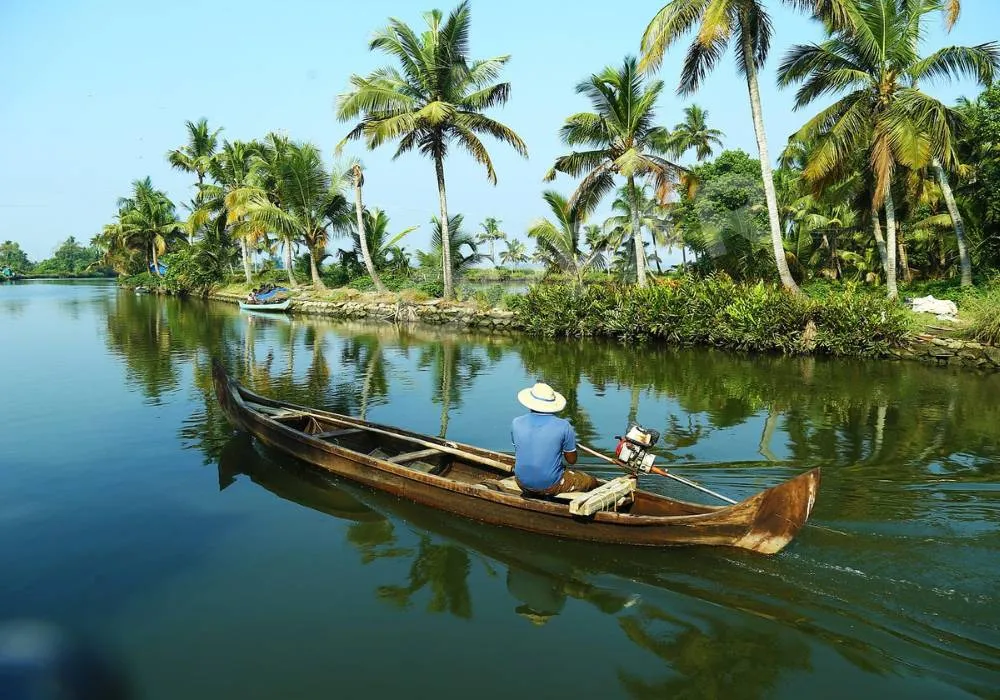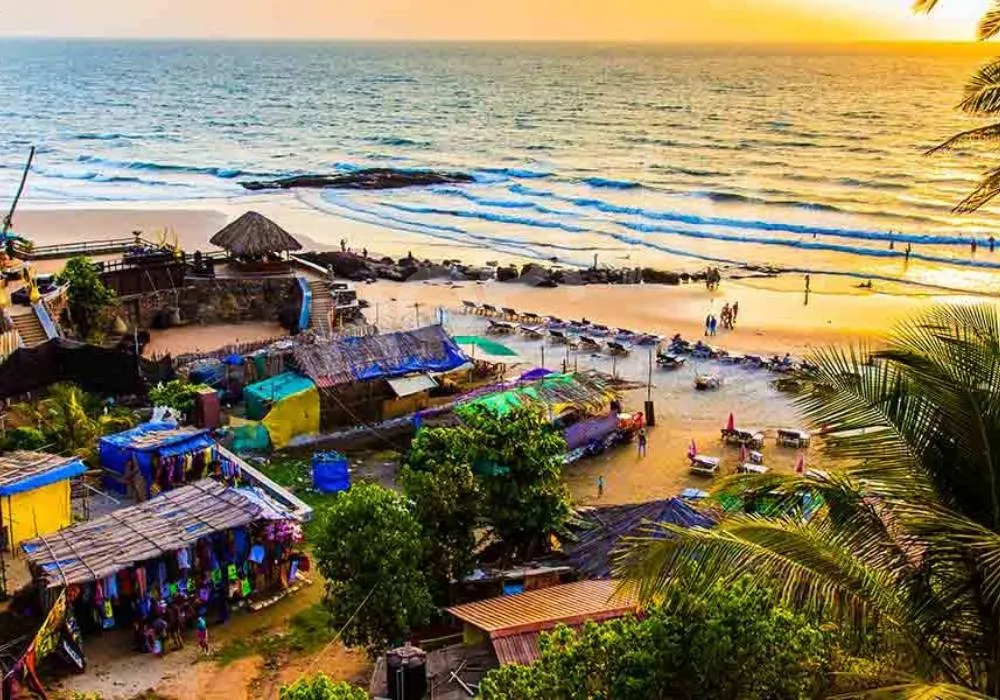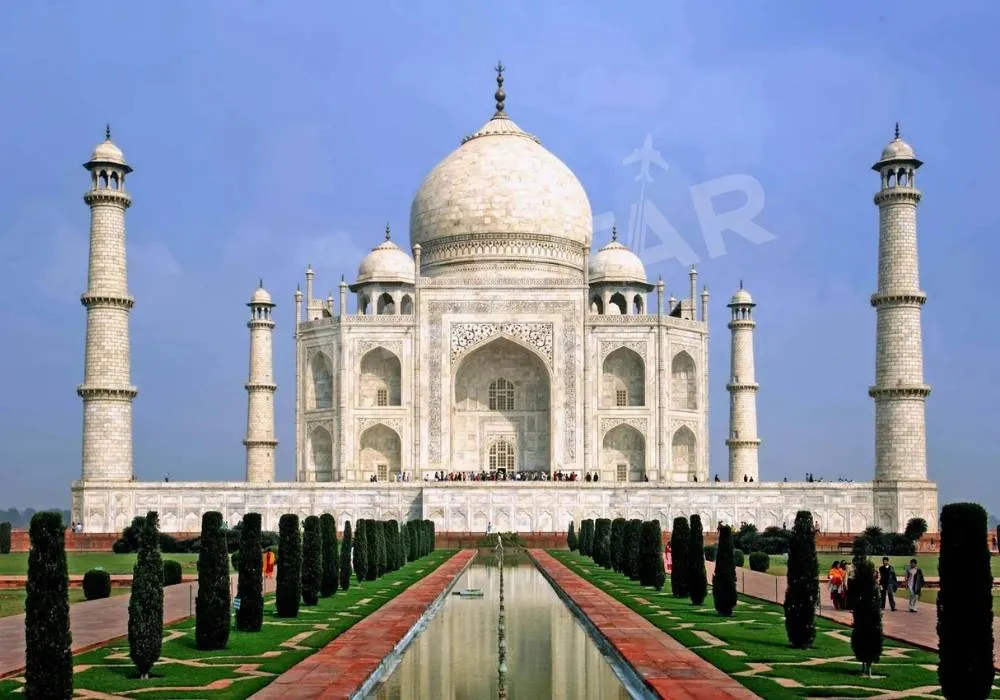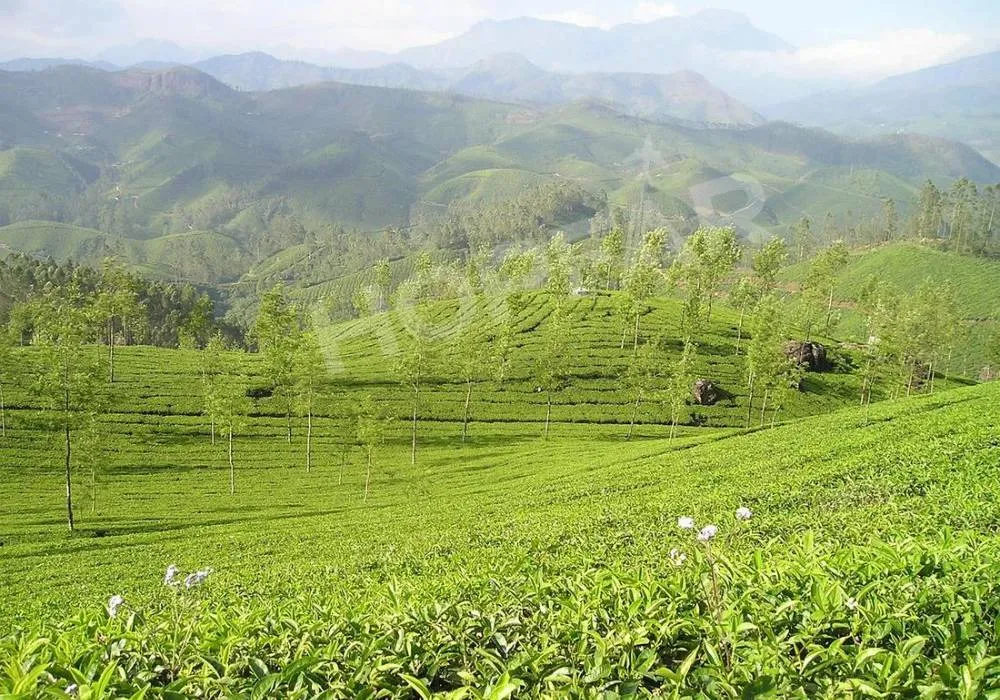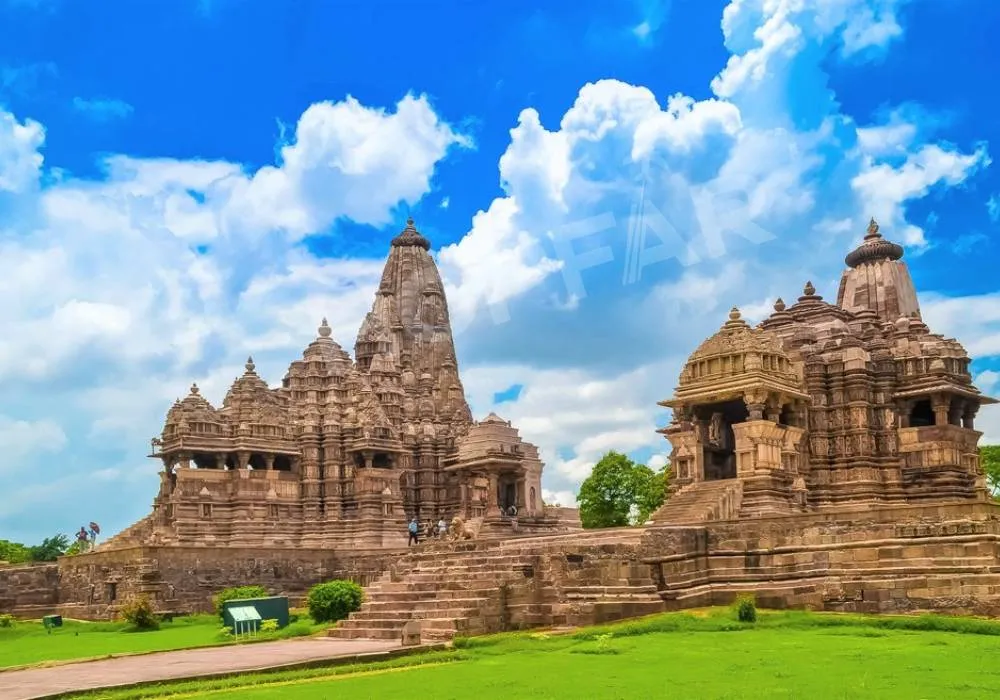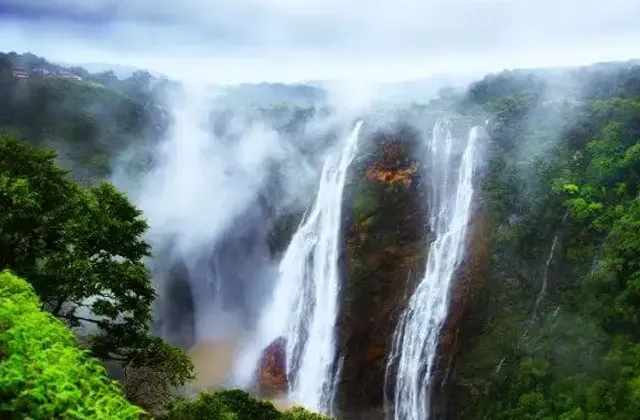
by pankaj | Feb 23, 2024 | Blog, Destinations, national, Tips, Travel Tips
India, which is a land where old myths rub elbows with contemporary life, whispers to the ears of the tourists with its rich tapestry of history, culture, and fascinating sceneries. Every place seems to murmur secrets of its glorious past, patiently waiting to be uncovered. undefined
Delhi: Where Empires Collide
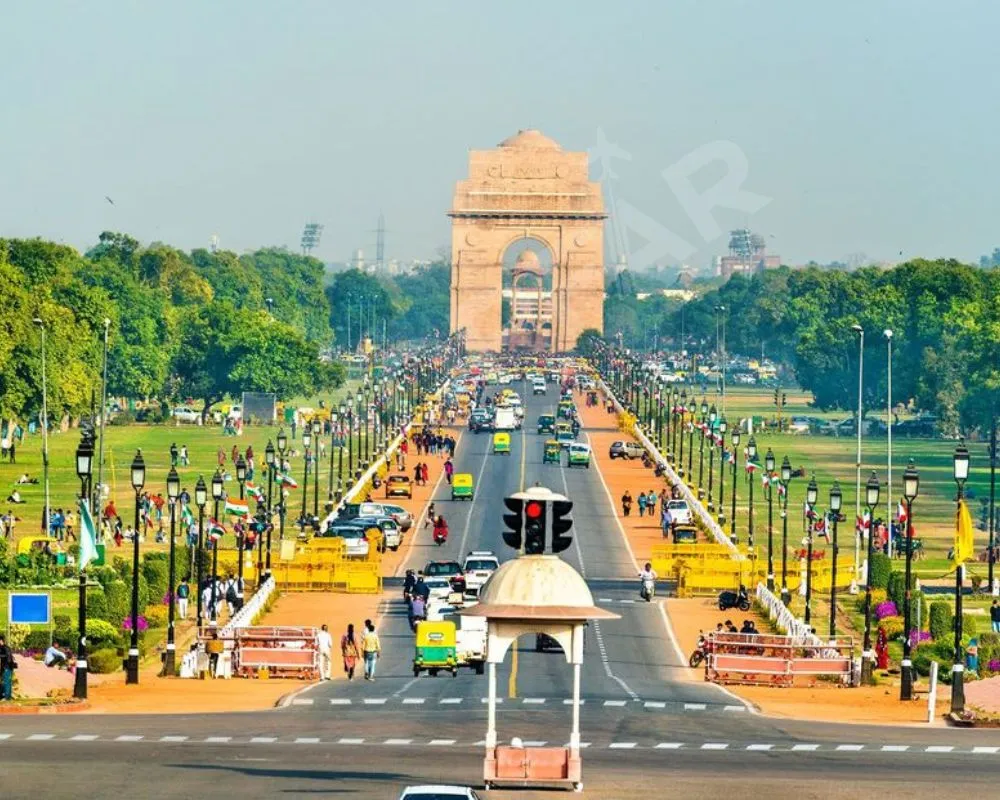
Commence in Delhi, a mini-India for you. Feel like being amazed by the Red Fort, the fortress of Mughal emperors, listening to the echoes of their enunciations within its towering walls. Get lost into the winding alleys of Chandni Chowk, which is a centuries old market place, where the intoxicating smell of spices intertwines with the cries of the vendors. A visit to Raj Ghat pays respect to Mahatma Gandhi, whose non-violent spirit continues to impact, and the Changing of The Guard ceremony at the magnificent Rashtrapati Bhavan demonstrates contemporary India’s majesticness.
Agra: Gestures of Eternal Love
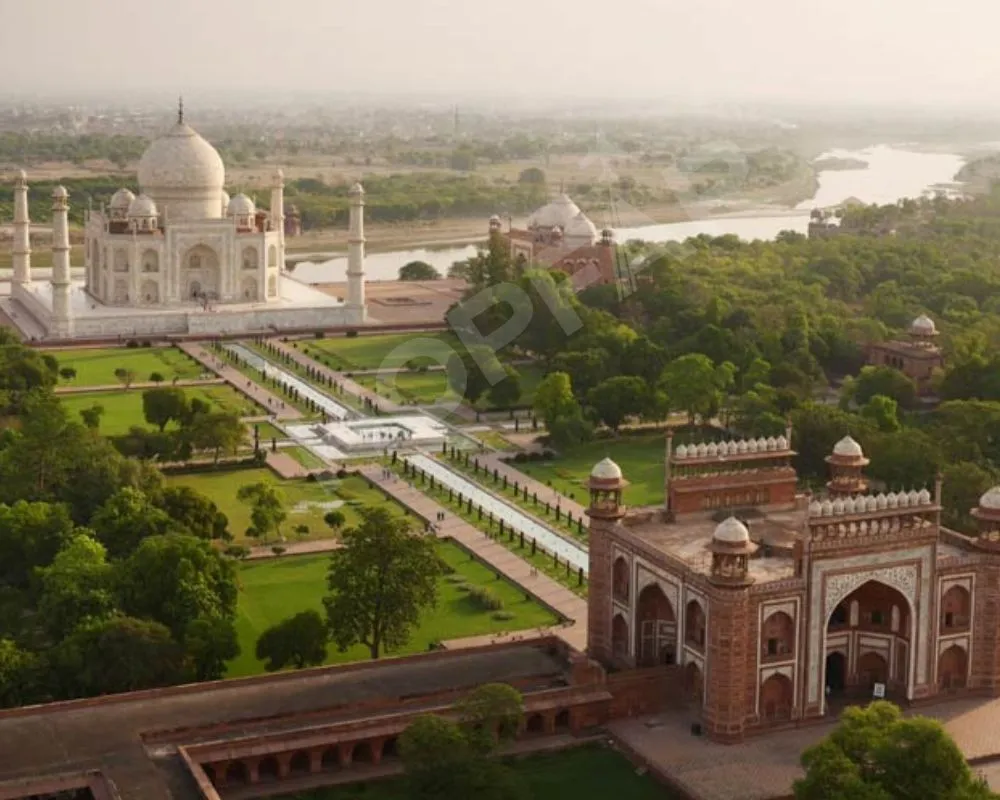
Every journey to India fails to achieve its completion without seeing the Taj Mahal, an epitaph in white marble written with Shah Jahan’s unbroken longing for his beloved wife Mumtaz Mahal. This architectural marvel is a palate of time, it’s intricate carvings and delicate inlay work leaving you speechless. Delve into the Agra Fort nearby, a Mughal signature design, a fort where the sandstone tells tales of both the battles won and the court games.
Jaipur: Where Royalty Is Met with the Rajasthani Style.

Get submerged in the grandeur of the Pink City of Jaipur, awashed with a warm sympathetic color. Take a guided elephant ride to Amber Fort, a magnificent sentinel which stands atop a rugged hill, and imagine the splendid royal processions that would have passed through its courtyards. The Hawa Mahal, a beautiful structure with numerous windows, creates the image of the women wearing the veils watching the lively streets below. The City Palace that is the perfect example of Mughal and Rajput architecture is a must-see. And, stroll around the bustling and colorful markets where you can find beautiful textiles and handmade souvenirs.
Hampi: Ruins which Yells on its Own

Go back to the glorious days of Vijayanagara Empire at Hampi, which is a UNESCO World Heritage Site where history comes out of the pages. Wander amongst the sprawling ruins of temples, palaces, and marketplaces, with each stone carrying tales from an ancient era. Mesmerize at the delicate carvings on the Vittala temple chariot, an epitome of stone craftsmanship, and ascend the royal Hazara Rama temple complex, the epitome of the golden glow of the setting sun which offers a panoramic view of the ruins.
Kerala: Where the Elbow Meets the Peace

Spend time winding down on the serene canals of Kerala, a place where jade waters flow through thick forests. Float on an ancient houseboat while taking in the tranquility of palm trees whispering in the wind and picturesque villages. Discover the bustling spice markets of Kochi, scented with the heavy spices of cardamom, cloves, and pepper. Discover the wealthy history of Fort Kochi, a Portuguese enclave decorated with buildings of the colonial period. Watch the magical Kathakali dance performances, a display of the rich traditions of Kerala, where the actors in colorful costumes and elaborate headgear comic acts.
Varanasi: A City with a Spiritual Identity.

Experience the heart-warming activities of Varanasi, which is the holy city of Hinduism. See the sunrise ceremony on the Ganges which attracts tens of thousands to get the first rays of light and paint the water gold in it. Wander the narrow alley ways, laden with ancient temples each a symbol of years of reverence. View the magical setting of the evening aarti, a beautiful ceremony with chanting and fire that rocks the air with a magical and otherworldly energy. Be bewitched by the burnt pyres on the ghats – an example of continuity as this has been a witness to the cycle of life and death over the past millennia.
Madhya Pradesh: At the Intersection of Empires and Caves

Delve into the core of India, to Madhya Pradesh, a region where the echoes of old empires and the voices of spirituality are seamlessly intertwined. Let yourself be intimidated by The Khajuraho Group of Monuments, a UNESCO World Heritage Site adorned with detailed carvings presenting the stories of love, valor, and religious devotion. Be amazed at the size of the Kandariya Mahadeva Temple which is the Chandela architecture masterpiece, and visualize the skillful craftsmen who carved those elaborate details. Tread into the labyrinths of Ajanta and Ellora caves where Buddhist, Hindu, and Jain Gods emerge from the walls, narrating spells of faith and fine art, as timeless as they are. See the ancient city of Sanchi, where the grand Sanchi Stupa, the oldest Buddhist monument in India, give an evidence of local spiritual wealth.
Andaman and Nicobar Islands: Eden Unearthed

Take a break to the unspoilt heaven of the Andaman and Nicobar Islands, where the turquoise waters kiss the white sand beaches and lush green forests are filled with rare species of animals. Explore the dynamic heritage of Port Blair as it presents to you the colonial-era structures such as the Cellular Jail in all its starkness and picturesqueness. Visit the Jarawa and Onge indigenous tribes` tribal villages, and learn about their culture and their way of life that is in harmony with nature. Plunge into the sparkling blue waters and be amazed by the richness and diversity of marine life, from coral reefs brimming with vivid fishes to large manta rays seemingly floating in the waters. Discover your own paradise in this undisturbed archipelago where history is heard through palm leaves rustling and where the largest ocean has it’s own mysterious secrets.
These are only some among the countless historical treasures to be unearthed in India. Therefore, let your curiosity take you on a wonderful journey of discovery and where the past speaks in every nook and cranny. From the golden dunes of Rajasthan which are the home to several magnificent forts that were once on the old trade routes, to the green hills of Munnar, where tea plantations cover the whole landscape, every region has its own mix of the past and present. Spend time admiring the architectural wonders of Khajuraho, immerse yourself in the Buddhist sites in Sarnath and Bodh Gaya, or get lost in the colonial touch of Pondicherry and Goa.
So, get ready, liberate your inner wanderer and dive into the ultimate India adventure. Recall, its remarkable history is as multi-hued and engaging as the landscape which has so many tales to tell, waiting to be found by enquiring minds and warmed hearts.

by pankaj | Feb 13, 2024 | Blog, City/State Tour, Destinations, Family Trip, Friends Trip, Latest Post, national, Team Outings, Travel Tips
Delhi is a fascinating city that draws on its rich cultural mix, which reflects its historical importance and current buzz. Delhi, as India’s capital, functions as its political hub; at the same time, it is a significant center of commerce and entertainment.
Over the years, Delhi has amazed the visitors with its colorful attractions. From the iconic architectural landmarks like the Red Fort and India Gate to the busy streets of Chhawri Bazar and modern shopping complexes of Saket and Connaught Place the city has the old-world charm and contemporary swag.
Delhi is also full of spiritual sites, including the Lotus Temple, Jama Masjid, as well as Akshardham Temple, all of which show Delhi’s cultural inclusiveness. Visiting Delhi is to dive into a spectrum of experiences that include history, culture, and modernity, all seamlessly blended together to create an incredible journey into the soul of India.
- India Gate

India Gate, which is also commonly referred to as the All India War Memorial, is prominently located in New Delhi on Rajpath. Built by Sir Edwin Lutyens, this 42-meter-tall monument pays tribute of 82,000 Indian and British soldiers who sacrificed their lives in the First World War and the Third Anglo-Afghan War. The shape of India Gate is similar to the Arch de Triomphe, the Gateway of India and the Arch of Constantine, which are known landmarks. Like these famous landmarks, India Gate stands as a symbol of sacrifice and valor. It is the venue of the Republic Day Parade which occurs every year, with people gathered to observe the occasion. Named after 13,300 service personnel, and illuminated by Amar Jawan Jyoti, India Gate is a dual symbol of remembrance and a well-liked attraction which brings visitors near and far.
- Qutub Minar

Qutub Minar is like a big tower in Delhi Complex, which is UNESCO’S heritage site. It boasts of a massive height of 72.5 meters (238 feet), which is the second tallest thing in Delhi. The first ruler of the Delhi Sultanate, Qutb Ud-Din-Aibak, started to construct it in 1192 after defeating the last Hindu ruler of Delhi. He initiated it with the base, and then his son-in-law, Iltutmish, erected three other levels. Firoz Shah Tughlag concluded the top two floors later on. Therefore, it is a tower that many people built over a period of years.
- Humayun’s Tomb

The tomb of Humayun, at Nizamuddin East in Delhi, is the burial ground of Mughal Emperor Humayun. Constructed in the year 1569-70 by the Empress Bega Begum, it resides as the first garden-tomb in the Indian subcontinent. The striking use of red sandstone, scarcely encountered in that period, and its fusion of Mughal and Persian architecture, artistically executed by Persian architect Mirak Mirza Ghiyath, earned it the UNESCO recognition in 1993.
Bathed by a Mughal Garden and by the Yamuna River, the tomb’s grandeur is enhanced, especially during winter. It also holds the remains of other Mughals including Humayun’s family and the descendants of the Emperor Shah Jahan, thus providing to its historical importance.
- Akshardham Temple

Akshardham Temple is a symbol of the Indian heritage, spirituality, and architecture. The Akshardham of Delhi City, which is also known as Swaminarayan Akshardham and is dedicated to Lord Swaminarayan, is the World’s Largest Comprehensive Hindu Temple as per the Guinness Book of World Records.
The temple’s architecture is really unique, as it has eight elaborately carved mandapams, and the walls decorated with timeless teachings of Hinduism and devotional practices. The core of it is by the divine presence of Lord Swaminarayan’s Murti with representations of 20,000 deities, renowned personalities of Indian history, and revered sages, all reflecting the wealth of Indian architecture and spirituality.
The Akshardham complex consists of India’s largest step well, enthralling water shows, enormous gardens like Narayan Sarovar, and sacral ceremonies for visitors to experience. It is a serene retreat for spiritual aspirants and a festival of India’s cultural brilliance.
- Lotus Temple

Situated in New Delhi, the Lotus Temple stands soaring as it embodies the fundamental concepts of the Baha’i faith. With the shape of an attractive lotus flower, it attracts people from over the world. This sanctuary, designed by Fariborz Sahba and completed in 1986, was the symbol of unity and acceptance, being hospitable to people of different backgrounds.
Feeling the serenity of temple’s grounds, guests are welcomed by lush gardens and peaceful pools. The winding lanes end at the temple gates, bringing tranquility in the midst of a busy market. The exquisite architecture of the interior creates an aura of quiet and peaceful contemplation that encourages people either to sit in quiet meditation or join in the recitation of sacred texts. The Lotus Temple goes beyond boundaries and becomes a haven of peace and spiritual comfort for everyone who enters.
Apart from its aesthetic value, the Lotus Temple serves as a sanctuary for meditation and self-reflection, thus becoming a coveted area in the urban landscape of Delhi.
- Red Fort

The Red Fort located in old Delhi was constructed by Shah Jahan in 1639 when he shifted the capital from Agra to Delhi. It was their place of residence and the place where they held significant occasions. The walls of the fort are built from red sandstone of great strength. Today, it’s a tourist spot with museum and on Independence Day it hosts the Prime Minister’s flag ceremony.
Previously known as the Blessed Fort or the Quila-e-Mubarak, the Red Fort stands by the River Yamuna in the Old City. It is renowned for its Mughal architecture and listed as a UNESCO World Heritage Site in 2007. The preservation and security of the monument are taken care of by the Archaeological Survey of India.
- Garden of Five Senses

Amidst the Said-ul-Ajaib, the Garden of Five Senses spreads over 20 acres providing a tranquil respite from the city’s hustle. Intended for the awakening of touch, sight, smell, sound, and taste, it’s a sanctuary of nature’s admirers. With thematic parks, Mughal gardens, water lily pools, cascading waterfalls, and a solar park, it’s a serene retreat. It came out to be a vision of Architect Pradeep Sachdeva, a joint effort of Delhi Tourism and Transportation Development Corporation, which cost 10.5 crores. It has been hosting the February flower show that people love for more than 15 years, and it draws the attention of the visitors with its simplicity and beauty.
- Lodhi Garden

Lodhi Garden, neighboring Safdarjung Tomb and Khan Market in Delhi, is a lovely park with the tombs of Sayyid ruler Mohammed Shah and Lodhi king Sikandar Lodhi. Dating back to the Lodhi dynasty, it also has the Shisha Gumbad and Bara Gumbad. A combination of Sayyidi and Lodhi styles portray in the garden the rich heritage of Delhi. Run by the Archaeological Survey of India,
it had been earlier known as the ‘Lady Willingdon Park’ prior to India’s independence. The quiet ambiance in a lively setting appeals people for relaxation and recreation.
- Dilli Haat

Dilli Haat is like an enchanting village fair where you can also shop and eat your heart out. It is spread over 3 locations in Delhi and is managed by the Delhi Tourism and Transportation Development Corporation (DTTDC). Here, all kind of hand-made beautiful things can be found: carvings of wood, fabrics, metal crafts, etc.
Dilli Haat is not just a marketplace, it’s also a food lover’s paradise. You can taste dishes from various parts of India, ranging from momos to hot chicken. And not to forget the cultural shows that take place every day in the amphitheater!
Dilli Haat was established in 1994 and occupies 6 acres land. It is a bustling place with 62 stalls whose craftsmen come and go within two weeks. It is a simple and lively place where creativity and culture are in synergy.
- Rashtrapati Bhavan

At the western end of Rajpath, in New Delhi, is located the Rashtrapati Bhavan, the official residence of India’s President. It was formerly the Viceregal House, but is now the biggest head of state residence in the world, covering 330 acres and occupying 5 acres with a main building having 340 rooms. It came into being with the help of the architects Edward Lutyens and Herbert Baker, the work was completed in 1929. President Kovind has been living there since July 2017.
The Rashtrapati Bhavan can be visited in three zones. The first encompasses the Main Building and Central Lawn with its architecture. The second is the Rashtrapati Bhawan Museum complex with a number of buildings to visit. At last, Part three features the fantastic Mughal Gardens, a verdant garden of greenery. A visit to the Rashtrapati Bhavan will let you see the grandeur of it in the flesh.
- Chandni Chowk

The famous Chandni Chowk marketplace in Old Delhi is a vibrant center of trade and culture that is centuries old. Built by Emperor Shah Jahan in the 17th century, it is situated across from the famous Red Fort and provides a view of the imposing Fatehpuri Mosque nearby. This lively wholesale market is known for its historical significance and wide-ranging assortment of goods.
Being described as “a shopper’s paradise,” Chandni Chowk is a unique bazaar with the finest range of products like clothes, electronics, jewelry, etc. Its narrow streets, which used to be lit up by the moonlit canal, now are full of activity of traders and customers fighting their way out of the maze of business. The bargain seekers and the retailers have their fair share of opportunities within the lively street.
Apart from its commercial character, Chandni Chowk is known for its scrumptious street food and gastronomical offerings. There is an energy that permeates the place which reflects the soul of the city of Delhi, with its sights, sounds, and smells. It is said “Chandni Chowk – Delhi.”

by pankaj | Feb 10, 2024 | Blog, Destinations, Garden, Honeymoon planning, national, Travel Tips, vacations, Vacations & Leisure
India, enriched with the ethos of culture and diversified landscapes, becomes the haven of love, inviting couples for unforgettable journeys together. India is a country that stands amidst the vibrant colors of its cities and the peaceful, natural beauty of its secluded lands. From these areas, there is a plethora of romance ready to be experienced.
The forts standing tall, telling old tales of love, and the palaces that let history and passion merge; each part of India speaks of a different love story. The lakes contemplate depth, and the untouched shoreline reveals the private times to come. With Valentine’s Day just around the corner, venture deep into the true spirit of romance to unearth India’s most bewitching tourist places. Come with us to discover the best 7 of the most romantic places, where each second is a sizzle of love fire.
- Manali

Manali in Himachal Pradesh is a scenic destination quietly embraced by snow-clad mountains and green forests. It is where nature creates its magic; it unveils astonishing views and peaceful valleys that conquer the heart of everyone who visits here.
Manali – once a preferred honeymoon destination – has gradually become a hideout of young backpackers. That is the charm of Old Manali lies in its comfy cafes, stable wifi, and a cuddly atmosphere, welcoming visitors from different paths of life.
But Manali is not just about relaxed walks and comfortable corners. It’s an adventure playground for both nature lovers and adrenaline junkies. Hikers seek tranquility in its winding lanes; while the river Beas is a magnet for adventure seekers to experience its rapids. Parvati Valley, which is located nearby, with its quaint villages and serene landscapes, provides a respite from the cacophony of daily life. And now, after the inauguration of Atal Tunnel, the daunting beauty of the Spiti region is accessible, calling the wanderers to discover this uncluttered wilderness.
- Leh Ladakh

Ladakh, situated in the state of Kashmir, part of India, became a union territory on October 31, 2019. From the freezing Siachen Glacier to the mighty Himalayas, Ladakh’s geography is awe-inspiring. It’s called the world’s coldest desert. Ladakh is full of tranquil chapels, Buddhist monasteries, and multi-colored prayer flags. Similarly to Tibetans, its people, cordial to visitors, welcome them.
Sheering into Leh and Kargil districts, Leh captivates travelers with its monasteries, Shanti Stupa, cozy cafes, and lively Leh Bazaar.In Ladakh, adventure lovers come for rafting and trekking. But roads are closed from October to May due to snow. Only flying is the way out. Chadar trek on the frozen Zanskar river takes place from January to the end of February. Ladakh is a fusion of natural splendor and cultural wealth, combining adventure and solitude.
- Alleppey

Alleppey, also referred to as Alappuzha, is a charming place reputed by its intricate system of canals and lagoons, that create amazing backwaters implying houseboats. Located in the southern part of Kerala, Alleppey is bordered by stunning coastlines filled with uncontaminated beaches ideal for water activities during the dry season. Conjoined with other picturesque spots such as Munnar and Thekkady, Alleppey is an ideal pick for honeymooners and families planning to have incredible holidays.
Backwaters of Alleppey fringed with palm draw travelers from all over the world. Kuttanad, which is known as the ‘Rice Bowl of Kerala,’ covers a large area of Alappuzha. Thus, verdant paddy fields, beautiful lakes, and placid backwaters form a scenic picture.
All that Alleppey has to offer, in terms of accommodation, varies from the traditional houseboat to cozy homestays and Ayurvedic resorts, is a delightful stay for every traveler. Sail through tranquil backwaters in houseboats and watch pragmatic rice fields & lively village life presented neatly for you. Make an exploration of Alleppey rich culture taking a pilgrimage to the pilgrim centers like Chettikulangara Devi Temple and Mullakkal Temple.
Enjoy the Alleppey vivid culture watching the exciting snake boat races on Punnamada Lake in August and September. For the authentic Alleppey experience enjoy toddy, a local palm wine, at one of the charming toddy shops with the unique flavor added.
- Goa

Goa is a coastal state in India’s west, the smallest in the country, renowned for its peaceful beaches, great nightlife, delicious seafood, and unique architecture. In just 3,702 square kilometers, Goa sits tamely in the Konkan region and has a distinct aura making it stand out from the rest. Goans are very warm and hospitable – there are festivals for this purpose – say the New Year celebrations, the Goa Carnival, etc., attract visitors from far and wide. The food scene is awesome and the fresh seafood is dazzling; with regard to the nightlife, Goa’s nightlife is among the best in the whole of India, characterized by bars, cafes, and clubs that cater to everyone.
For those unsure about North and South Goa, it’s simple: The northern Goa buzzes with life and has the most popular beaches, markets, and hangouts, while the southern Goa is more peaceful and extravagant. The architecture of Goa bears the marks of its colonial past with the Portuguese reflected in its churches, forts, and lovely houses. Panjim, being the capital, sits on the banks of the Mandovi River, a place for the floating casinos and a bustling life.
Accessible by air, road, and rail, Goa’s 100-kilometer coastline has a beautiful beach every ten kilometers. Either it is Anjuna and Arambol or Baga and Calangute everyone can check them and find something according to his taste And let’s also include the untouched beauty of Agonda and Palolem beaches in South Goa.
- Gangtok

Sitting in clouds and touched by the grace of nature, Gangtok — the capital of Sikkim — is one of India’s favorite hill stations. The height of Gangtok is 1650 meters above sea level and on clear days it provides its visitors with a wonderful view of Mt. Kanchenjunga It’s a paradise for the adventurers as you can trek Dzongri, Varsey/Barsey, and Tholung that begin right from it. Adventure lovers can enjoy paragliding, hang gliding, and exciting mountain biking trails in Gangtok. From March to May the landscape is painted a rainbow with the blossoms of Rhododendrons at its peak.
The evening at MG Road, in Gangtok, is a beehive of life. You can drop in at a quiet restaurant or a lively pub until 11 pm if you want. It’s also a shopper’s heaven, selling Tibetan handicrafts, woolen cloths, and tea well into the night. Natural wonders like Tsomgo Lake, Ban Jhakri Falls, and others beautiful panoramic views surround Gangtok. The city also encompasses honorable names like Enchey Monastery, Ganesh Tok, and Do Drul Chorten Rumtek Monastery. For adrenaline-craved adventurers, the Teesta River offers mesmerizing white water rafting.
Gangtok defined as “hill-top” represents the beauty of hill stations. It combines native cultures with urban pleasures; a portion of heaven right in the northeast. Be it a family vacation, a romantic break, or an action-packed trip, Gangtok assures an amazing experience under nature’s cover.
- Shimla

Venue of Himachal Pradesh Shimla is a favorite hill retreat of Indian families, youth, and married people all across India. At 2200m above sea level it was once the summer capital during British rule. Today Shimla still has its old-world charm thanks to colonial-style buildings, busy Mall Road, and ridge that is dotted with shops and eateries.
Reaching Shimla is a breeze; it’s just a 4-hour drive from Chandigarh and though it has an airport, flights are few and far between. The Kalka-Shimla railway line, a UNESCO World Heritage Site, is a popular way to come, presenting beautiful views en route.There are visitors that go to nearby Fagli to see its all-white landscapes and Chail, the home of the royal palace plus the highest cricket pitch. And don’t forget to visit the Jakhu Temple, the famous temple in Shimla. Also, watch the amazing scenic points.
The weather is good for most part of the year; summers attract the visitors. Winters in Shimla involve chilly temperatures as well as the occasional snowfall from December to February, making the place more attractive.
- Agra
Agra is situated on the bank of a serene River Yamuna in Uttar Pradesh; it calls tourists with its rich history and beautiful architecture. India is well-known for the Taj Mahal, one of the Mughal dynasty’s masterworks; everyone visiting India should visit it.The beauty of Agra is not just restricted to the Taj Mahal but it extends to all its other attractions like the Agra Fort and Fatehpur Sikri which have been decorated by UNESCO. Such places offer a view into India’s colorful heritage and monuments of Mughals.
Agra, one of the busiest cities of Uttar Pradesh and the 24th most populated in India, is a ‘magnet’ for tourists from all over the world. It is the pivot of the Golden Triangle Circuit with Delhi and Jaipur, and part of the Uttar Pradesh Heritage Arc with Varanasi and Lucknow. Apart its monuments, Agra feeds food lovers with its famous Petha sweets and rough marble pieces of art in markets like Sadar Bazaar. However, Agra is usually visited on day trips from nearby cities though its beauty should be savored.
Tourists need to be on the lookout for scams carried and done by fake guides and bogus sellers. And nevertheless Agra is a place of awe and discovery, calling visitors to know its past and acculturation at their pace.

by pankaj | Feb 9, 2024 | Blog, Honeymoon planning, national, Travel Tips, vacations, Vacations & Leisure
The enchanting destinations lie in the enriched and incredibly large country – India. As you move from the snowy mountains up north to the sun-drenched beaches down south, the wonders of India are waiting to be discovered. Most appealing are the following 10 destinations, all of which have their own special features.
- Jaipur, Rajasthan: Jaipur’s Glory, the Pink City

Jaipur, which is often also known as the ‘Pink City,” is a historical wonder in Rajasthan. It is drenched in history, a collection of magnificent palaces, mighty forts, and lively markets. Hawa Mahal, Amber Fort, and City Palace represent a great position of Rajput architecture. The markets’ vibrancy reveals to us trades and jewelry of ancient traditions that provide a living testimony to the glorious legacy of the Indian royal. European art struggles to capture the vividly multisensory markets that compete with spices and fabrics for the consumer’s olfactory and visual senses.
- Varanasi, Uttar Pradesh: Spiritual Pilgrimage on the Ganges

It is one of the oldest continuously inhabited cities in the world. Varanasi is situated on the holy Ganges. The sacred city of Varanasi, spiritual in its essence, stages some magic shows in the form of Ganga Aarti along the ghats every evening. Old sinuous lanes lead to ancient temples and indirect spiritual elevation. The boat ride on the Ganges, watching the Sun rise, turns into an unmistakable emotional experience to make its way to the depths of mind-boggling antiquity. The Ganga Aarti is a splendid combination of prayers and the luminous sound of the flames; it saturates through the airwaves with a holistic aura, overcoming the world of mere mortals.
- Kerala Backwaters: Serene in the lap of Mother Nature

If it is a quiet, serene retreat, Kerala’s backwaters call. They offer a special view of the verdure within a network of lakes, canals, and rivers. Houseboat rides turn into a relaxing excursion, allowing glimpses into the ways of the locals along the banks and lush, for the boredom of nature lovers who need a sheltered location. The continuous swing of the palm trees, the calming sway of waters, and the faint notes of melodies unveil the true meaning of a soothing exercise.
- Rishikesh and Haridwar, Uttarakhand: Harmony of Spirituality and Adventure

Sitting at the slopes of the Himalayas’ foothills and nestled under the western bank of the Ganges river, spiritual and adventure hubs like Rishikesh and Haridwar spring out. The Yoga Capital of the World, Rishikesh, appeals to spiritual seekers and yoga enthusiasts. Haridwar’s honor is Ganges Arati at Har Ki Pauri. Not only do these cities open the door to the Himalayas, but they also provide a chance for various activities like trekking, rafting, and meditation retreat. What remains to be said is that Rishikesh and Haridwar become doors of passage through which one steps over the threshold of the average, beyond it to the supernatural.
- Hampi, Karnataka: Illustrations in Stone – Timeless tales
A UNESCO World Heritage Site, Hampi tells the stories of the Vijayanagar Empire using its old ruins. The sublime terrain is embellished with complicated temples, palaces, and large rocks, which conjure up a fanciful environment that will impress. Hampi turns into a sanctuary for the history fan and thrill-seekers, producing a one-of-a-kind combination between cultural endeavors and amazing scenery. Hampi is not carrying the relics of some old civilization; it is a whisperer that tells the story of its glory that wasn’t.
- Goa: Beach bliss and cultural harmony

An embodiment of clear beaches, bustling nightlife along with Portuguese-style architecture, Goa emerges as a stunning coastal haven. Bonding with Goa, the desired leisure on the sandy beaches, preferring water sports, or the exposure to the exciting party circle, Goa indeed caters to everyone’s whims. The coast of Vietnam is all villages charming as resorts, wonderful seafood, and the unique combination of Indian and Western cultures. The sound of the waves playing in the air, giggling people at shacks along the coast drowning the soundscape, and the scent of spices having a way of taking over every other scent create a feeling of time itself dancing according to these tunes of pure happiness.
- Agra, Uttar Pradesh: Taj Mahal’s Eternal Regality

Home to the legendary Taj Mahal, Agra is a historical marvel to be visited. The construction of the Taj Mahal by Shah Jahan was to depict eternal love. The architectural greatness of Agra Fort and Fatehpur Sikri provides only more splendor to this urban hegemony and transports the visitor into the world of magnificence of the Mughal years. The setting sun, splashing a dance of shadow and radiant warmth across the great white wonder, there is no doubting the depth of eternal love reverberating off of each peculiar detail.
- Darjeeling, West Bengal: Calmed by tea

It became the hub of a world-famous tea, which is being grown in the sprawling tea plantations and hill station Darjeeling is the most popular place where one can enjoy its three most valuable heritages, Kanchenjunga views, and colonial charm. Happy a UNESCO’s World Heritage Site, the Darjeeling Himalayan Railway provides a perfect nostalgic trip through a beautiful landscape. The tea gardens, bustling markets, and invigorating climate make Darjeeling an invigorating holiday sanctuary. The tea estates become a search where one can get lost in the scent of fresh leaves and the mist-covered mountains.
- Khajuraho, Madhya Pradesh: Human Emotion is portrayed through Stone Cutting

On the back of lavishly sculptured temples portraying different emotions and sensualities, Khajuraho has been declared a World Heritage Site by UNESCO. The temples were constructed between 950 and 1050 A.D, and they reveal unprecedented architectural and artistic ability. The intricate statues and explicit carvings ensure that Khajuraho is indeed a special place where one gets to know about the rich history of India regarding legacy and craftsmanship. Khajuraho’s temples are not mere marvels of architecture but more of frozen expressions in stone, capturing the entire gamut of human passions.
- Ladakh, Jammu and Kashmir: Room in Nature’s Lap

It is a land of mighty mountain passes and magnificent natural scenery that Ladakh has transformed into a place where adventure lovers and nature lovers find a second home. It is everywhere in the wilderness of the Himalayas with the clear lakes and mysterious Buddhist monasteries; it is a jarring feeling unreal to nature itself. Even Leh, the capital of Ladakh, thus attracts tourists not just for its dazzling Rajasthani and Central Asian culture but also for trekking to mountaineering and captivating splendor of Pangong Lake.
Conclusion
By its infinite variety of landscapes, cultures, and history, India attracts the traveler to travel on a journey of discovery. The chapters inherently specific to each destination open up; be in the history of the unique royal palaces in Jaipur, spiritual aura of Varanasi, or calming backwaters of Kerala. A myriad of astonishing experiences, your bags, Go embrace the beauty. Let India unwrap and unfold its magic right in front of your eyes.

by pankaj | Jul 31, 2023 | Blog, City/State Tour, Destinations, Family Trip, Friends Trip, national, Vacations & Leisure
India’s picturesque hill stations have always been a magnet for travelers seeking respite from the hustle and bustle of city life. These tranquil retreats offer breathtaking natural beauty and boast of cleanliness and serenity that make them perfect holiday destinations. In this blog, we present the top 10 hill stations in india that you must visit in 2023 for an unforgettable experience of rejuvenation and tranquility.
- Munnar, Kerala
Nestled amidst the lush Western Ghats in Kerala, Munnar is a captivating hill station in india known for its misty mountains, tea gardens, and serene lakes. The clean and unpolluted air of Munnar makes it an ideal destination for nature lovers and those seeking solace in the lap of nature. Whether a stroll through the tea estates or visiting the pristine Eravikulam National Park, Munnar offers an enchanting experience for all.
- Coorg, Karnataka
Also known as the “Scotland of India,” Coorg is a pristine hill station in Karnataka renowned for its coffee plantations, verdant landscapes, and cascading waterfalls. Coorg’s well-maintained surroundings and cleanliness make it a paradise for trekkers, adventure enthusiasts, and anyone looking to unwind amidst nature’s bounty.
- Manali, Himachal Pradesh
Manali, located in the lap of the mighty Himalayas, is a popular hill station that always impresses visitors with its breathtaking beauty. The town takes pride in keeping its streets and tourist spots clean. It offers a perfect blend of adventure activities, cultural experiences, and serene landscapes, making it a must-visit destination in 2023.
- Darjeeling, West Bengal
Famous for its aromatic tea gardens and the majestic view of Mount Kanchenjunga, Darjeeling is a charming hill station that captivates travelers with its cleanliness and awe-inspiring scenery. Visitors are taken on a picturesque journey through verdant valleys and foggy hills by the toy train ride, which is a UNESCO World Heritage Site, providing them with priceless memories.
- Ooty, Tamil Nadu
Ooty is a picturesque hill station in Tamil Nadu, surrounded by lush gardens and blue mountains. Known for its immaculate landscapes, well-maintained gardens, and beautiful lakes, Ooty offers a tranquil escape for travelers seeking a peaceful retreat in the lap of nature.
- Shimla, Himachal Pradesh
One of India’s most popular hill stations, Shimla, the “Queen of Hills,” boasts cleanliness and well-organized infrastructure. The Mall Road, Ridge, and Scandal Point are some of the well-maintained spots that add to the charm of this beautiful hill station. In 2023, shimla hill station will be a favorite destination for families, honeymooners, and solo travelers.
- Gangtok, Sikkim
Tucked away in northeastern India, Gangtok is a pristine hill station surrounded by the majestic Himalayas. Its cleanliness, well-kept streets, and eco-friendly practices have earned it the “Cleanest Tourist Destination” title in India. The monasteries, serene lakes, and breathtaking viewpoints make Gangtok an unforgettable experience for travelers.
- Mount Abu, Rajasthan
While Rajasthan is known for its deserts, Mount Abu is an oasis of greenery and tranquility. The hill station’s clean and well-maintained surroundings and the pleasant climate make it an ideal summer getaway in 2023. The Nakki Lake and Dilwara Temples are among the top attractions that enthrall visitors.
- Nainital, Uttarakhand
Nainital’s shimmering Naini Lake and the surrounding hills make it a mesmerizing hill station, providing a much-needed break from city pollution. The town’s cleanliness and well-organized infrastructure, combined with various recreational activities, ensure a delightful experience for travelers in 2023.
- Shillong, Meghalaya
Known as the “Scotland of the East,” Shillong is a serene hill station with rolling hills, gushing waterfalls, and lush greenery. The locals’ emphasis on cleanliness and eco-friendly practices has earned Shillong the title “India’s Cleanest Hill Station.” The pleasant climate and warm hospitality make it an inviting destination for travelers looking for an offbeat yet pristine hill station experience.
Conclusion
As we embark on new journeys in 2023, India’s cleanest hill stations beckon with their beauty and tranquility. From Munnar’s misty hills to Nainital’s serene lakes, each hill station on this list offers a unique and pristine experience. So, plan your trips, immerse yourself in these clean havens’ untouched beauty, and let them rejuvenate your mind and soul. Remember, traveling responsibly and respecting the environment will help preserve the charm of these hill stations for generations to come.

by pankaj | Jul 6, 2023 | Blog, Destinations, national, Team Outings, Tips, vacations, Vacations & Leisure
The monsoon season in India, typically from June to September, can be a wonderful time to explore nearby destinations with lush greenery and enjoy the refreshing rain showers. If you’re looking for India’s nearest tourist places during this season, here are some recommendations:
- Sri Lanka:
Just a short flight from India, Sri Lanka offers a fantastic monsoon getaway. Explore the cultural sites of Sigiriya, visit the tea plantations in Nuwara Eliya, relax on the beautiful beaches of Bentota, or go wildlife spotting in Yala National Park. The southwest coast of Sri Lanka experiences its dry season during India’s monsoon, making it an ideal destination.
- Bhutan:
Nestled in the Himalayas, Bhutan is a stunning destination with breathtaking landscapes and a rich cultural heritage. The monsoon season brings lush greenery to the valleys, making it a great time to explore the capital city of Thimphu, visit the iconic Tiger’s Nest monastery in Paro, and immerse yourself in Bhutanese culture.
- Nepal:
With its diverse landscapes and incredible mountain views, Nepal is a paradise for nature and adventure enthusiasts. During the monsoon season, the rain revitalizes the lush valleys and waterfalls. Head to Pokhara to enjoy the serene Phewa Lake and panoramic mountain vistas or explore the cultural treasures of Kathmandu and its surrounding areas.
- Myanmar (Burma):
Myanmar uniquely blends beautiful places, ancient temples, and rich history. The monsoon season brings cooler temperatures and occasional rain showers, making it a pleasant time to visit. Discover the awe-inspiring temples of Bagan, explore the floating gardens of Inle Lake, or soak up the colonial charm of Yangon.
- Maldives:
The Maldives, renowned for its pristine beaches and crystal-clear waters, can be a great monsoon escape. While it experiences some rainfall during this season, it often comes in short bursts, allowing you to enjoy the tropical paradise without the crowds. Indulge in water sports, relax at luxury resorts, and snorkel among vibrant coral reefs.
- Thailand (Andaman Coast):
While the Andaman Coast of Thailand experiences its monsoon season during India’s summer months, certain areas like Krabi and Phuket still offer favorable weather and are worth considering. You may encounter occasional rain showers but can still enjoy stunning beaches, go island hopping, and explore the lush rainforests.
Before planning your trip, remember to check the weather conditions and any travel sites. While the monsoon season can be a beautiful time to travel, it’s important to be prepared for occasional rain and plan accordingly.











